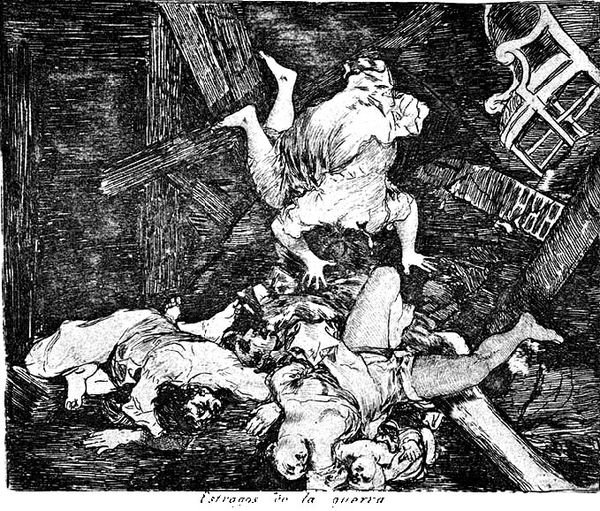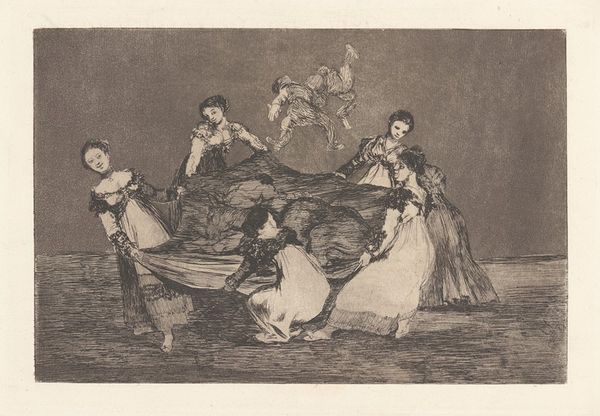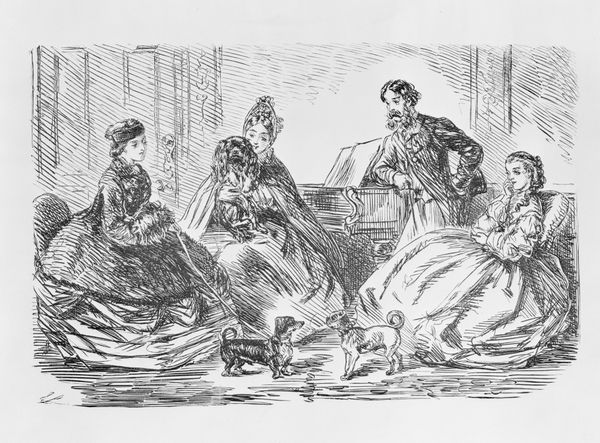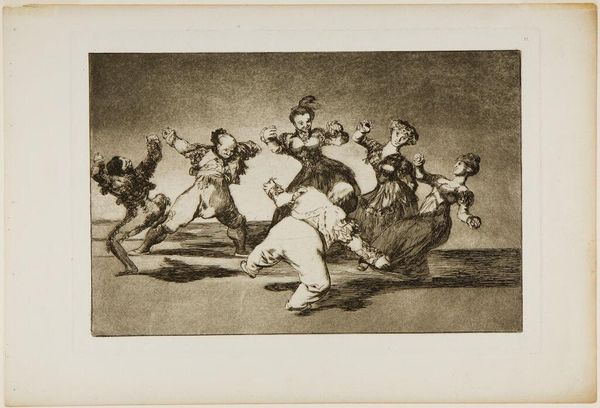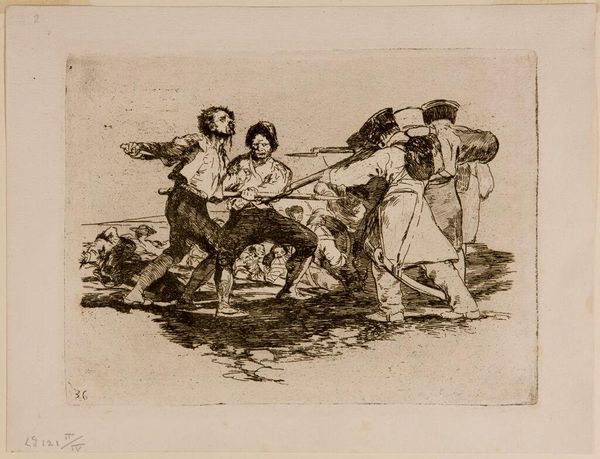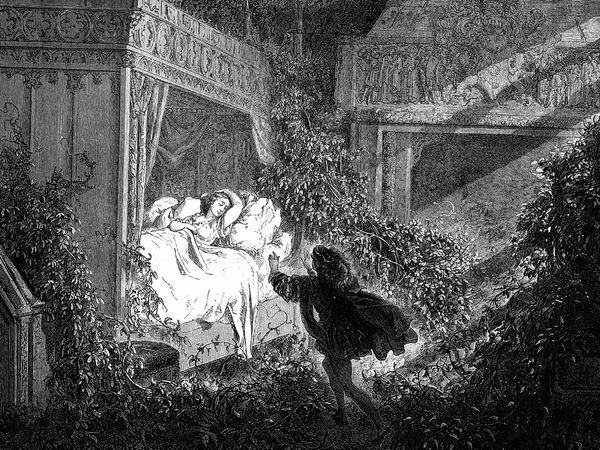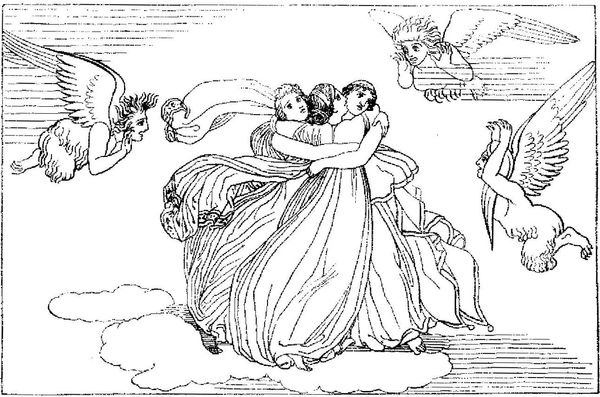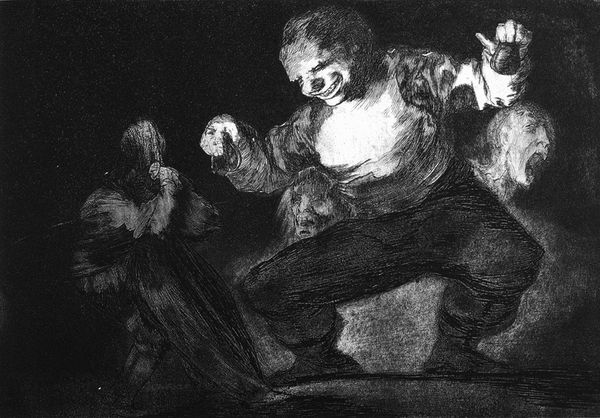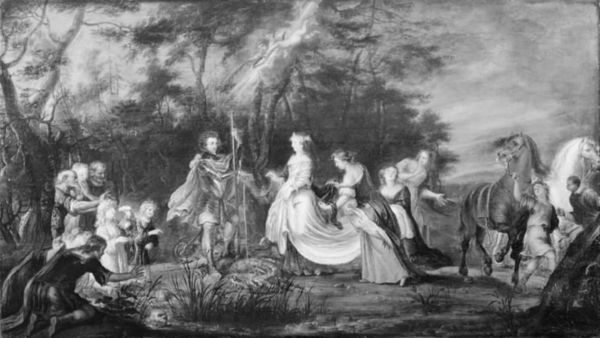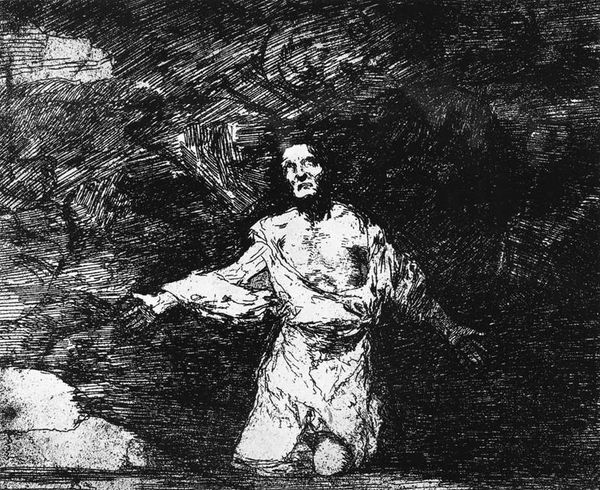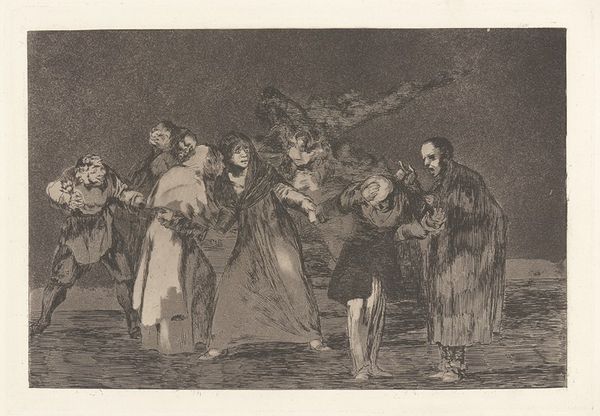
print, etching
#
allegories
#
allegory
# print
#
etching
#
charcoal drawing
#
figuration
#
romanticism
#
line
#
history-painting
#
charcoal
#
graphite
Dimensions: 24 x 35 cm
Copyright: Public domain
Curator: Ah, yes, this is "Feminine Folly" by Francisco de Goya, an etching from 1824. Editor: What strikes me immediately is its dreamlike quality. The high contrast almost obscures the forms; the bodies seem to float and merge with the darkness around them. Curator: Goya often used aquatint, which creates these granular effects, heightening the dramatic light and shadow, and in turn creates emotionally charged imagery, characteristic of Romanticism. Here, we see the political backdrop of early 19th-century Spain under Ferdinand VII manifesting in Goya's disillusionment and satire of societal elites. Editor: Look at the technique. The etcher's needle so rapidly applied! Goya’s prints often demonstrate an emphasis on the materiality of mark-making, mirroring the frenetic energy of production, doesn't it? One really sees the labour embedded into its surface. Curator: Exactly. And "Feminine Folly" fits into the broader context of his later works, particularly "Los Disparates", a series of prints depicting nightmarish visions and social critiques after the restoration of the monarchy. There's an obvious critique of women here too, perhaps of their perceived irrationality within the social structure. Editor: These women, burdened and possibly obscuring something beneath that white blanket... it feels like they are hiding what might be laborious process or a truth society wishes to remain covered. They are holding onto the status quo, or the materials, with tension! It’s physically palpable. Curator: Goya definitely pushes the boundaries. These aren't idealized figures we see in much academic art of the time. It challenges those expectations of beauty and exposes deeper social tensions through very unconventional and radical means. Editor: Absolutely. He seems almost preoccupied with the gritty, tactile quality achievable through printmaking. And the content aligns: folly, foolishness of labor; a dance with making as a means to address society. Curator: Studying "Feminine Folly" in this context reveals Goya's skepticism toward the established order. Editor: And looking closely at Goya's mark making really connects me to the critical undertones embedded in its inky surface.
Comments
No comments
Be the first to comment and join the conversation on the ultimate creative platform.
